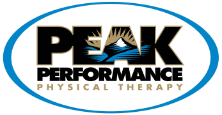Q: What do you think about injections or iotophoresis for chronic patellar tendinopathy? I'm checking out every possible treatment option that doesn't involve surgery.
A: Alignment or overuse problems of the knee structures is a common problem among athletes. Strain, irritation, and/or injury of the patellar tendon often produce pain, weakness, and swelling of the knee joint.
In the acute form of this problem, patellar tendonitis (also known as jumper's knee) develops. When the condition goes on for more than three months (six months at the outside), it is considered a chronic problem. That's when it becomes a tendinopathy (damaged tendon) and no longer a tendonitis (inflamed).
In the chronic phase of this condition, microtears in the tendon have failed to heal. Instead, poor blood supply leads to changes observed in the tendon-bone interface as well as in the fibrocartilage of the patella (knee cap). Ultrasound studies have also shown the formation of cyst-like cavities where the tendon attaches to the bone.
Nonoperative care is the first-line of treatment for this problem. The best approach (one that works for everyone every time) remains uncertain. Instead, the patient tries activity modification, rest, antiinflammatory medications, exercises, cold therapy, steroid injections, deep friction massage, or some combination of these approaches.
As for iontophoresis versus injection, there are studies supporting both forms of treatment. Iontophoresis is the use of a mild electrical current to push anti-inflammatory medicine through the skin to the inflamed or sore area. Steroid injection uses a needle to direct the medication directly to the problem area.
These conservative techniques seem to work best when applied early on in the condition and/or on patients with mild symptoms. These two techniques are not combined together (used at the same time) but they may each be combined with other approaches (e.g., activity modification , rest, manual therapy).
The best thing to do is work with your physician to identify the best form of treatment for you. If you do not get the expected results (pain relief, improved function), then try something else or some other combination of conservative care. If, after three to six months of trying various nonoperative approaches, then surgery may be the next step.
Reference: Antonio Pascarella, MD, et al. Arthroscopic Management of Chronic Patellar Tendinopathy. In The American Journal of Sports Medicine. September 2011. Vol. 39. No. 9. Pp. 1975-1983.
